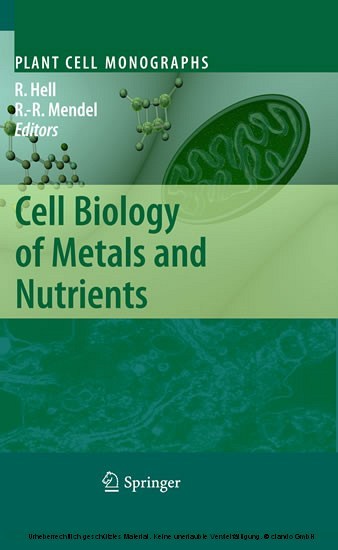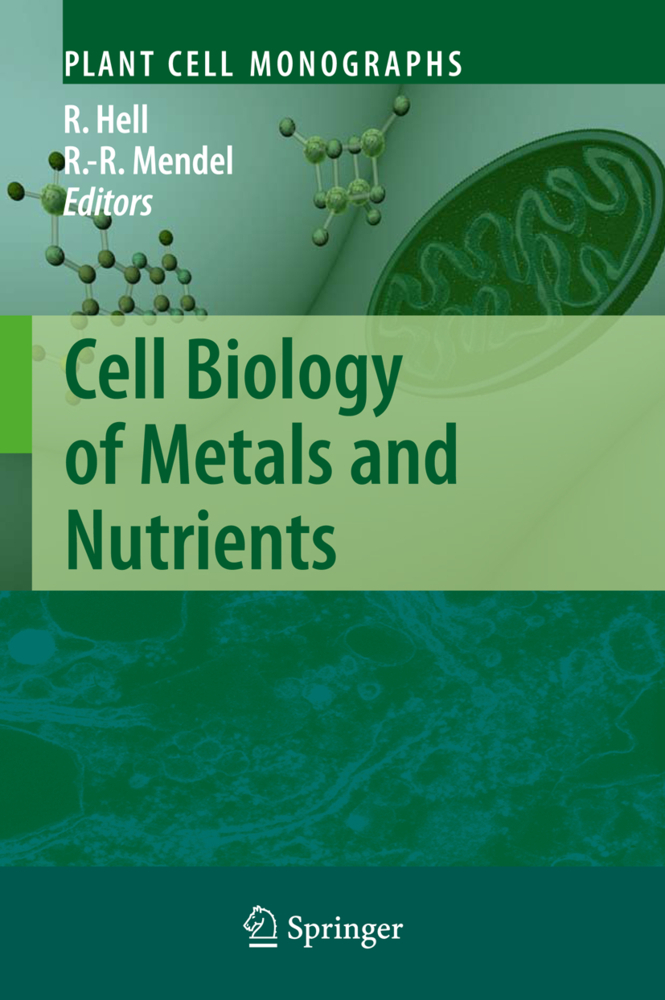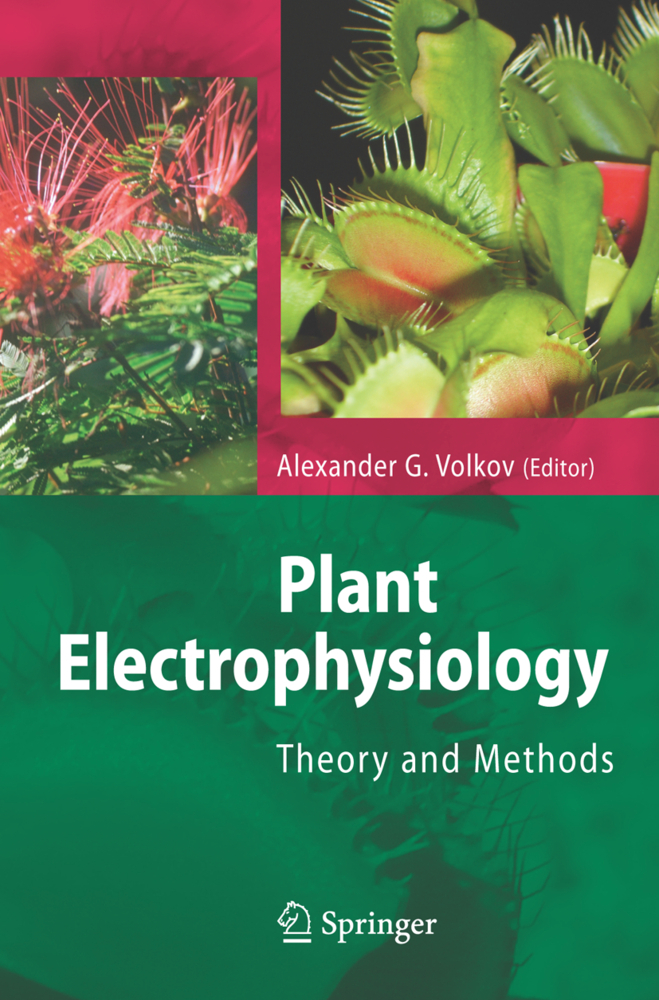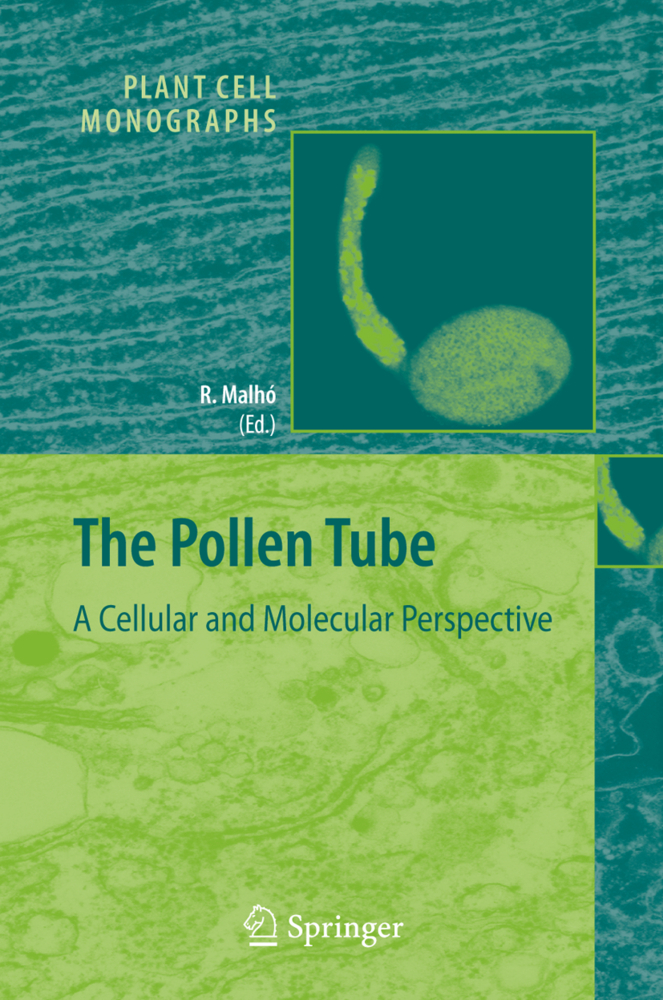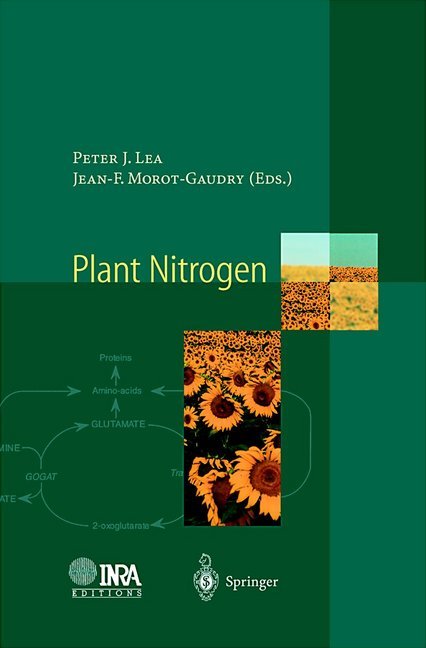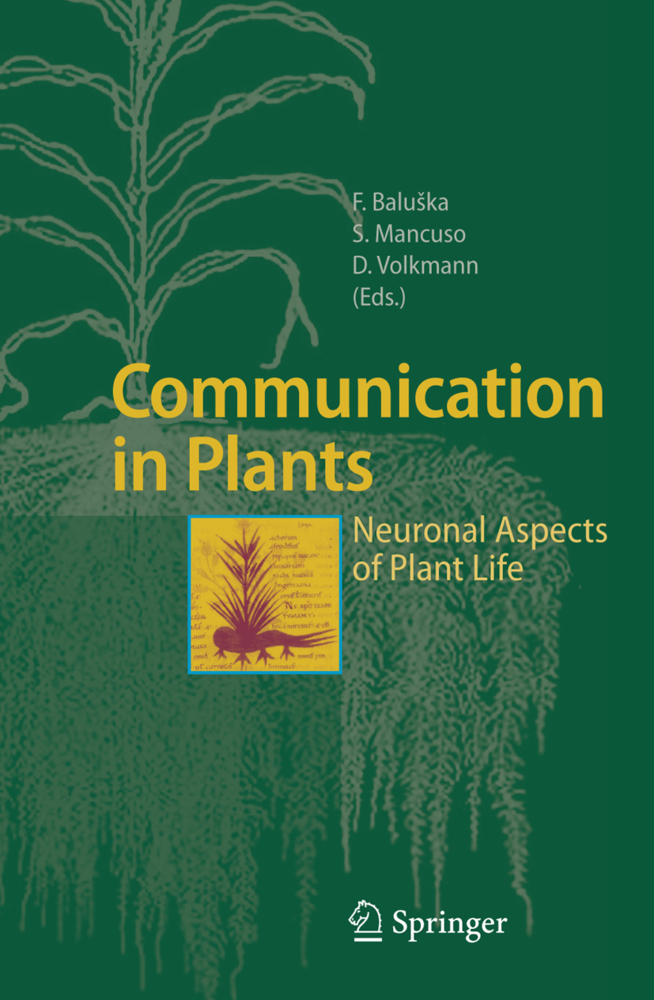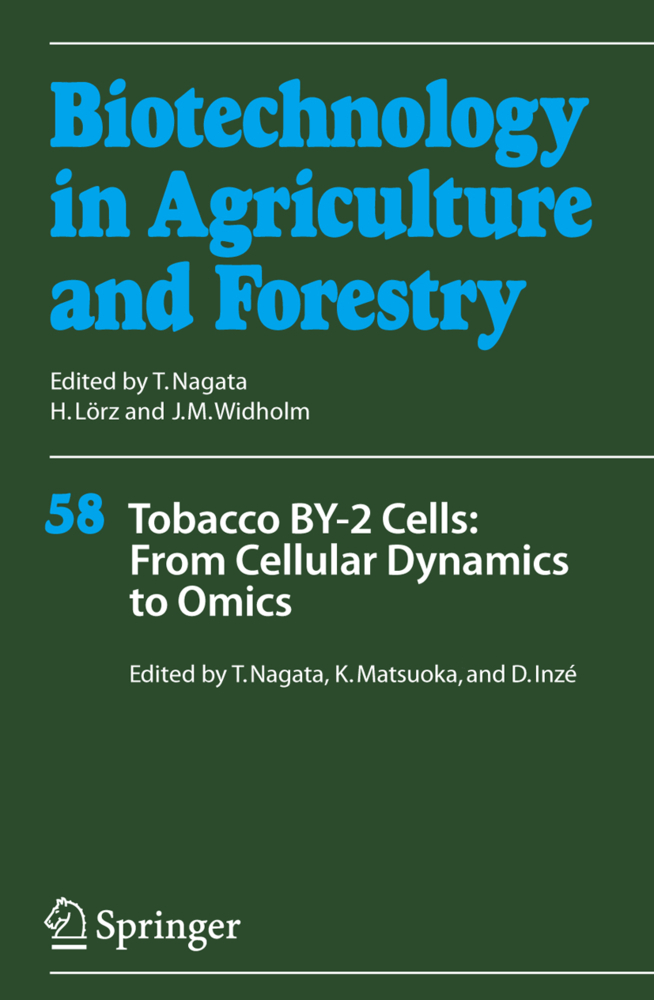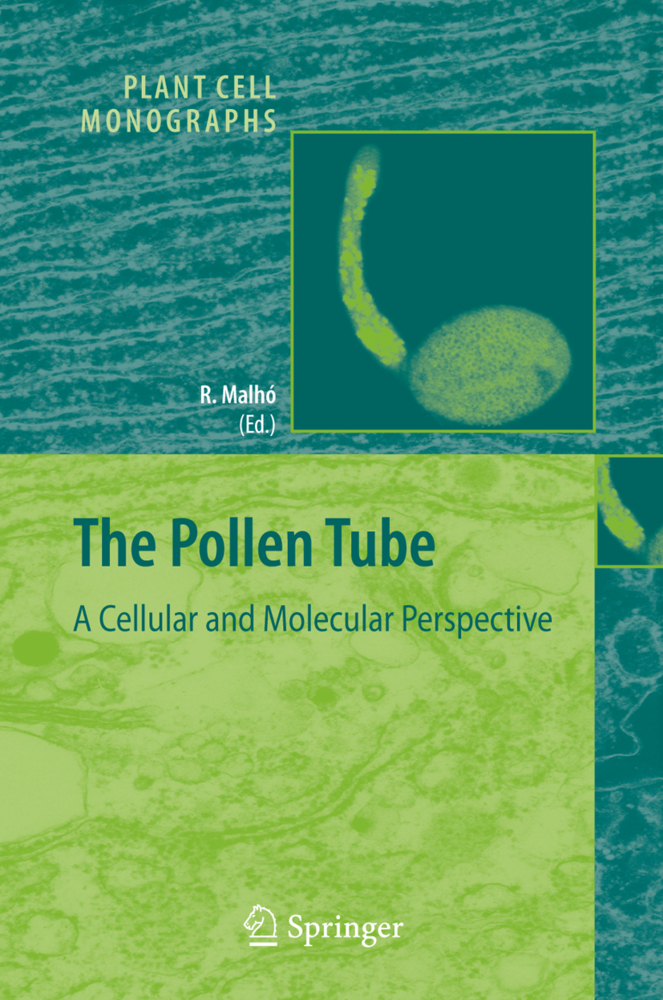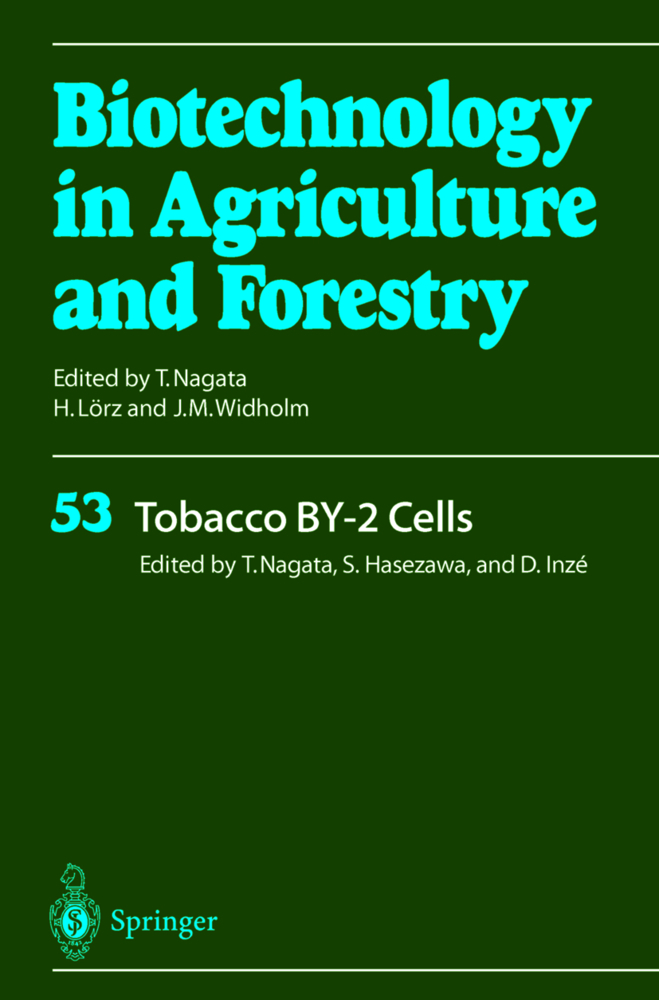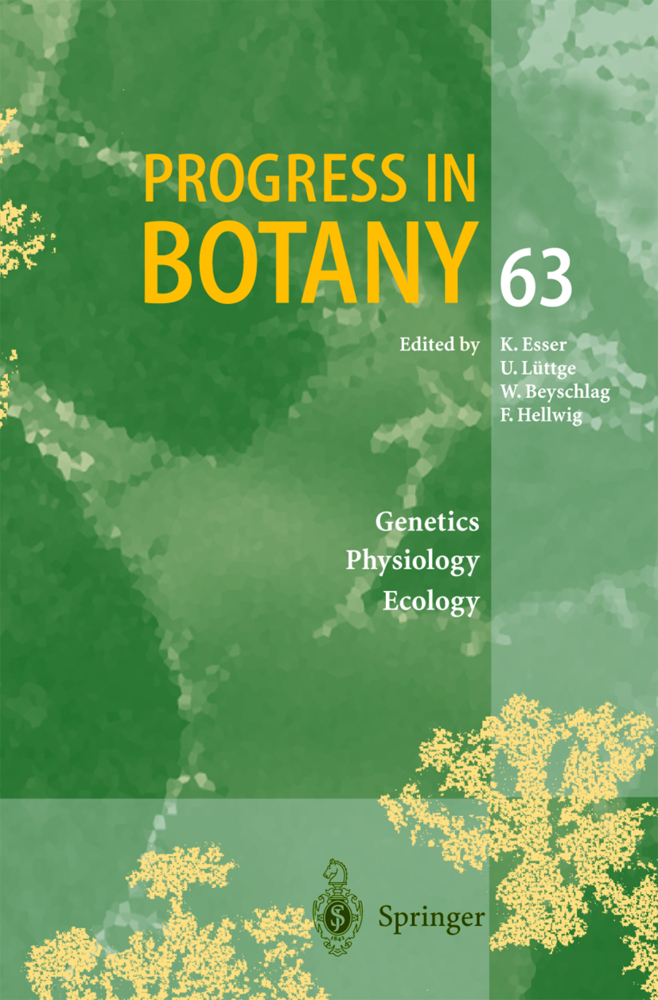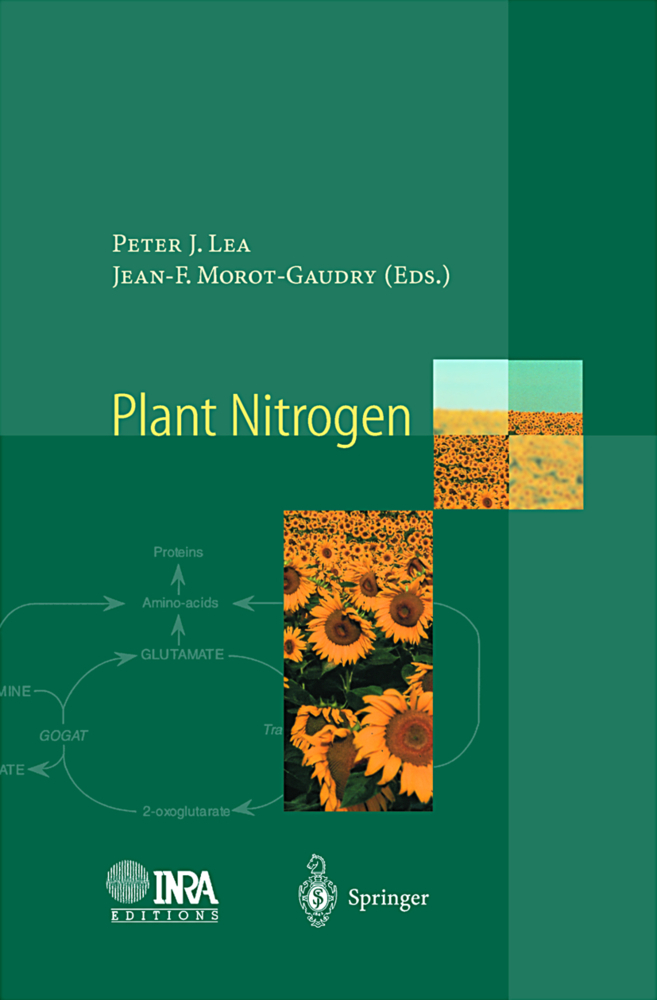Plants are composed of 17 essential and at least 5 beneficial elements, and these must be taken up as metal or nutrient ions to allow for growth and cell division. Much effort has been devoted to studying the physiology and biochemistry of metals and nutrients in plants. The aspect of cell biology, however, is an emerging new field and much needs to be learned about sensing, long-distance communication within plants, and cellular signal transduction chains in response to environmental stress. Cellular malfunction and consequently disease result when any of the key steps in metal and nutrient homeostasis are disrupted.
Working together, leading experts in their respective fields provide a new concept that reaches beyond plant nutrition and plasmalemma transport into cellular physiology. Each chapter contains basic information on uptake, physiological function, deficiency and toxicity syndromes, long-distance and intracellular transport. The discussion is devoted to metals and nutrients where recent progress has been made and highlights the aspects of homeostasis and sensing, signaling and regulation, drawing parallels to other organisms including humans. Finally, the book identifies gaps in our current knowledge and lays out future research directions.
Rüdiger Hell studied Biology at the Technical University of Darmstadt, Germany, and completed his PhD at the University of Cologne, Germany in 1989. From 1990 to 1992 he worked at the University of California in Berkeley as a postdoctoral researcher. After returning to Germany he completed his postdoctoral thesis at the University of Bochum in 1998 and held a position at the Leibniz Institute for Plant Genetics and Crop Plant Research in Gatersleben. During that time he developed his ongoing interest in molecular mechanisms of plant nutrition, especially sulfur metabolism and cellular redox control. In 2003 he was appointed chair at the Heidelberg Institute for Plant Sciences. He served as Dean of the Faculty of Biosciences at Heidelberg University from 2005-2007, and is currently the managing director of the university's Plant Sciences Institute.
Ralf R. Mendel studied biochemistry at the Humboldt University in Berlin, completed his PhD at the Martin-Luther-University Halle in 1979 and his postdoctoral thesis in 1985. During that time he held a position at the Institute for Plant Genetics and Crop Plant Research in Gatersleben. In 1992 he was appointed Full Professor of Botany at the (now) Institute of Plant Biology of the Braunschweig University of Technology, Germany. He has been the director of the Institute since 1993 and also served as Dean of Biosciences at Braunschweig from 1997 to 1999. His research focuses on the cell biology and biochemistry of molybdenum in plants and humans.
1;About the Editors;6 2;Preface;7 3;Contents;9 4;Contributors;11 5;Role of Boron in Plant Growth and its Transport Mechanisms;14 5.1;Introduction: Specialty of B;14 5.2;Physiological Significance of B;15 5.2.1;B Essentiality in Plants and Animals;15 5.2.2;B Deficiency and Toxicity Symptoms in Plants;16 5.3;RG-II-B in Cell Wall and its Requirement for Plant Growth;16 5.3.1;Chemical Properties of B: Possible Binding Sites of B in Cell;16 5.3.2;Identification of RG-II-B Complex in Plant Cell Walls;17 5.3.3;Synthesis of RG-II and Physiological Roles of RG-II;17 5.3.3.1;A. thaliana MUR1 for Fucose Synthesis Essential for Efficient Formation of dRG-II-B;17 5.3.3.2;NpGUT1, Glucuronyltransferase 1, for Cell Adhesion and Attachment;18 5.3.4;Changes in RG-II Properties in Response to B Nutrition;18 5.4;Molecular Mechanism of B Transport in Plants;19 5.4.1;Passive Diffusion;19 5.4.2;Channel-mediated B Transport for Facilitation;19 5.4.2.1;A. thaliana NIP5;1, A Channel for Boric Acid for B Uptake Under B Limitation;20 5.4.2.2;A. thaliana NIP6;1, for Preferential Distribution of B into Growing Shoot Tissues;20 5.4.3;Active B Transport System Under Limited Supply of B;21 5.4.3.1;A. thaliana BOR1, the First Borate Transporter Identified in the Biological Systems;21 5.4.3.2;BOR1 Degradation Via Endocytosis in Response to High B Supply;22 5.4.4;Active B Transport System Under Toxic Level of B;22 5.4.4.1;Cellular B Distribution Under Adequate and Toxic Level of B;22 5.4.4.2;BOR1 Homologs Involved in High B Tolerance Through B Efflux in Plants;22 5.4.5;Retranslocation of B;23 5.5;B Transport Mechanisms in Yeast and Mammals;23 5.5.1;Function of a BOR1 Homolog in S. cerevisiae;24 5.5.2;Function of a BOR1 Homolog in Animals;24 5.6;Conclusions and Foresights;24 5.7;References;25 6;Calcium: Not Just Another Ion;29 6.1;Introduction;29 6.2;Nutritional and Structural Functions of Ca2+;30 6.2.1;Nutritional Functions of Ca2+;30 6.2.2;Structural Functions of Ca2+;31 6.3;The Evolution of Ca2+ as a Signaling Molecule;32 6.4;Calcium Release in Response to Signals and Stimuli;33 6.4.1;Calcium Responses to Abiotic, Biotic Factors and Development;33 6.4.2;Calcium Responses to Hormones;34 6.4.3;Interconnection of Ca2+ Dynamics with other Second Messengers;35 6.5;Organelles and Ca2+;35 6.5.1;Calcium Signaling within the Nucleus;37 6.5.2;Calcium Regulation by the ER;38 6.5.3;Mitochondrial Calcium Dynamics;39 6.5.4;The Role of Chloroplasts in Cellular Calcium Homeostasis;39 6.6;Channels and Transporters shaping Ca2+ Signals;40 6.6.1;Influx of Ca2+;40 6.6.1.1;Voltage Dependent Channels;41 6.6.1.2;Ligand Gated Channels;41 6.6.1.3;Vacuolar and ER Ca2+ Channels;42 6.6.2;Efflux of Calcium;43 6.6.2.1;Calcium-Proton Antiporter;43 6.6.2.2;Phosphorylated-type ATPases;44 6.7;Signal Response Coupling of Calcium;45 6.7.1;Differences in Salt and Mannitol Responses;45 6.7.2;Differences in Symbiotic Calcium Responses;46 6.8;Calcium Binding Proteins;47 6.8.1;Calmodulin;47 6.8.2;CDPKs;48 6.8.3;CBLs and CIPKs;49 6.9;Conclusions;51 6.10;References;52 7;Cell Biology of Copper;67 7.1;Introduction;67 7.2;Functions of Cu Proteins in Plants;68 7.2.1;Plastocyanin;68 7.2.2;Cytochrome c Oxidase;68 7.2.3;Cu/Zn Superoxide Dismutase;69 7.2.4;Ethylene Receptors;69 7.2.5;Phytocyanins;69 7.2.6;Laccase and Ascorbate Oxidase;70 7.2.7;Polyphenol Oxidase;70 7.2.8;Amine Oxidase;71 7.2.9;Other Roles of Cu in Plants;71 7.3;Cu Movement in and out of Root Cells;71 7.3.1;Cu Uptake;71 7.3.2;Cu Export and Intercellular Reallocation;72 7.3.3;Root to Shoot Cu Translocation;73 7.3.4;Excess Cu;73 7.4;Intracellular Cu Delivery to Cu Protein Targets;74 7.4.1;Chloroplast: Cu Import into the Chloroplast;74 7.4.2;Delivery of Cu to other Compartments;76 7.4.2.1;Mitochondria;76 7.4.2.2;Endomembrane and Secretory Pathway;76 7.5;Senescence, Reallocation, and Delivery to Reproductive Tissues;77 7.6;Regulation of Copper Homeostasis;78 7.6.1;Transcription Factors;78 7.6.2;The Cu microRNAs;80 7.7;Overview;80 7.8;References;81
Hell, Rüdiger
Mendel, Ralf-Rainer
| ISBN | 9783642106132 |
|---|---|
| Artikelnummer | 9783642106132 |
| Medientyp | E-Book - PDF |
| Auflage | 2. Aufl. |
| Copyrightjahr | 2010 |
| Verlag | Springer-Verlag |
| Umfang | 306 Seiten |
| Sprache | Englisch |
| Kopierschutz | Digitales Wasserzeichen |

